Fish Anatomy
Understanding basic fish anatomy will improve your ability to better clean your fish. While not all fish species will have the exact structure, most share common characteristics. Differences in the anatomy of fish can explain some of their feeding habits and their life cycle.
Check out the size of the lure this small mouth bass hit - small mouth bass have a rather large mouth after all. Even many pan fish (such as blue gill) that appear to have small mouths, are able to put in their mouths food, bait, and hooks that may at first appear to be too big for them
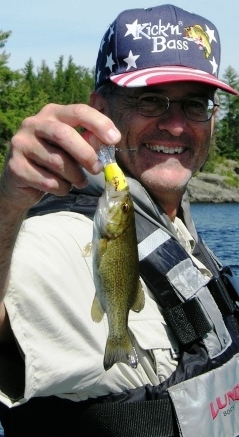
Basic Anatomy of a Fish
Highlighted here will be:
- External Anatomy of a Fish
- Internal Anatomy of a Fish
- Location of The Fillet
External Fish Anatomy
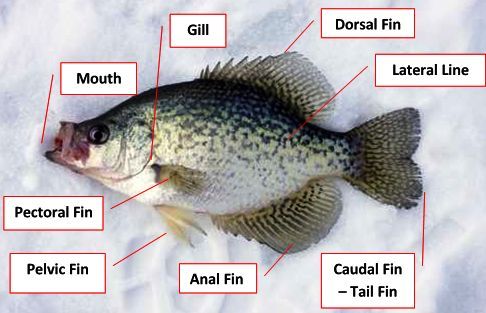
CRAPPIE
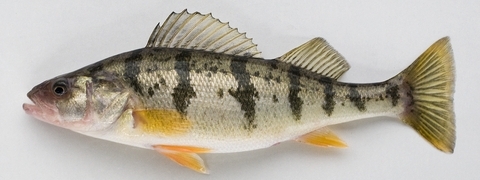
PERCH
Note the external anatomy similarities between the crappie and the perch. Fins, gill plate, tail all very similar in location. The Perch has a second dorsal fin as you can see. The location of its fillet is the same. Perch fillets may be a bit thicker but of course are not as wide. Yes they are tasty...
Internal Fish Anatomy
To the fish all of these structures are important. To the angler note the swim bladder, the stomach and the lateral line. The swim bladder is important to the fish because it helps keep them buoyant. This may explain why fish seem to become more dormant and not eat as much for a time when there is an air pressure change - like after a storm and a low pressure cold front passes through. Perhaps it takes a small amount of time for this bladder to equalize. Additionally, if a fish is brought up from a great depth, this air bladder can greatly expand and possibly burst which is bad for the health of the fish.
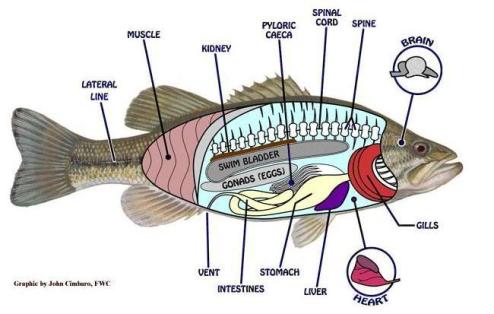
The contents of their stomach can show you what the fish has been feeding on. It is common to find all kinds of bait fish/food in the stomach of recent fish that are being cleaned. In the case below this pike had been feasting on crawdads. It might be a good idea the next day to try out some crawdad lures. In stomachs of larger fish, it is not uncommon to see other fish, as an example one 30 inch pike held a 10 inch walleye in its stomach.
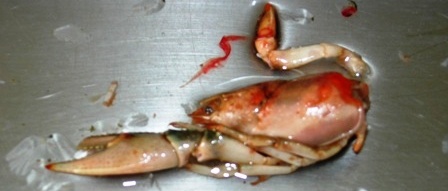
Lateral Line:
The lateral line of the fish is sensory organ of the fish anatomy. Best described as similar to our inner ear, the fish uses this organ to sense movement, proximity to objects, and in some cases fish in dark waters find their food through this organ. If you look closely you can usually identify the lateral line as a groove on the side of the fish running from just behind the gill to the tail.
Locating the Fillet
The fillet of the fish that is good to eat is the muscle that is located beneath the skin of the fish and its internal organs. The following outline on a crappie and a walleye shows you where to cut to remove the fillet. Your cut behind the gill plate goes down to but not thru the back bone of the fish. You then turn your knife parallel to the back bone and follow the back bone down to the tail. Most of their meat is near the back bone and goes down to not very much in the belly area.
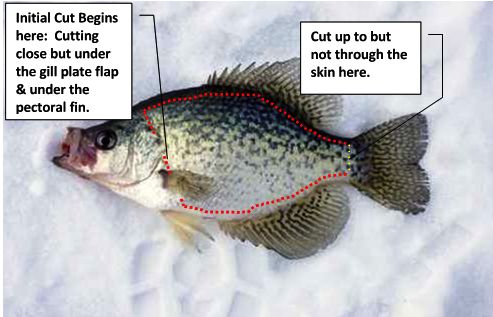
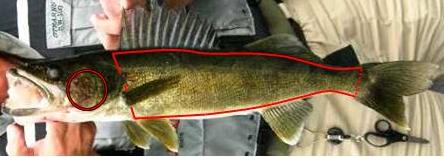
Walleyes are also noted for their tasty cheek muscles. Noted in the picture with a red circle, you can carefully remove these using the pointed end of a sharp fillet knife. When done properly you are rewarded with a nice round pieces of meat that resembles a scallop, and tastes wonderful. Stan, a Lac Seul guide, demonstrated how to harvest the pelvic fins of walleye, providing a small portion of meat as an appetizer - calling them wings - bite sized morsels that are both delicious and fun. You don't eat the fins, rather you gently suck the meat off the flat cartilage material, Delicious!
Get The Best Fish Fillet
Use the Best Fillet board on the market to get the best fillet fish after fish after fish. How does this work? TWO WAY Fillet holds the fish by the head not the tail. This provides the most consistent/efficient and safest way to fillet. No slipping or sliding. Clamp replaces one hand around the mouth area - like having a third hand. If you like to catch-keep-eat your fish you owe it to your self to try one of these TWO WAY Fillet board and clamp systems. Click and read more...

We are an Amazon Affiliate. If you purchase a product we recommended or another product while on Amazon, we may receive a small commission. Our staff recommends items that we have personally owned, used/tested, researched or we have fished with trusted anglers who recommend them. These products will not cost you any more than what is posted.
Top 10 Searched PFT Pages
- How to Wire for 24 Volts
- All About Deep Frying Fish
- Best Fillet Boards
- Do I need a Battery Isolator
- Understanding Boat Wiring
- Boat Trailer Springs
- Fish Anatomy
- Types of Anchors